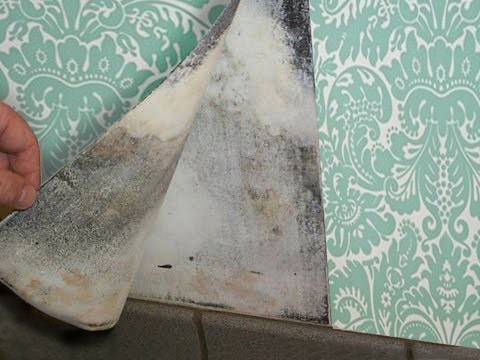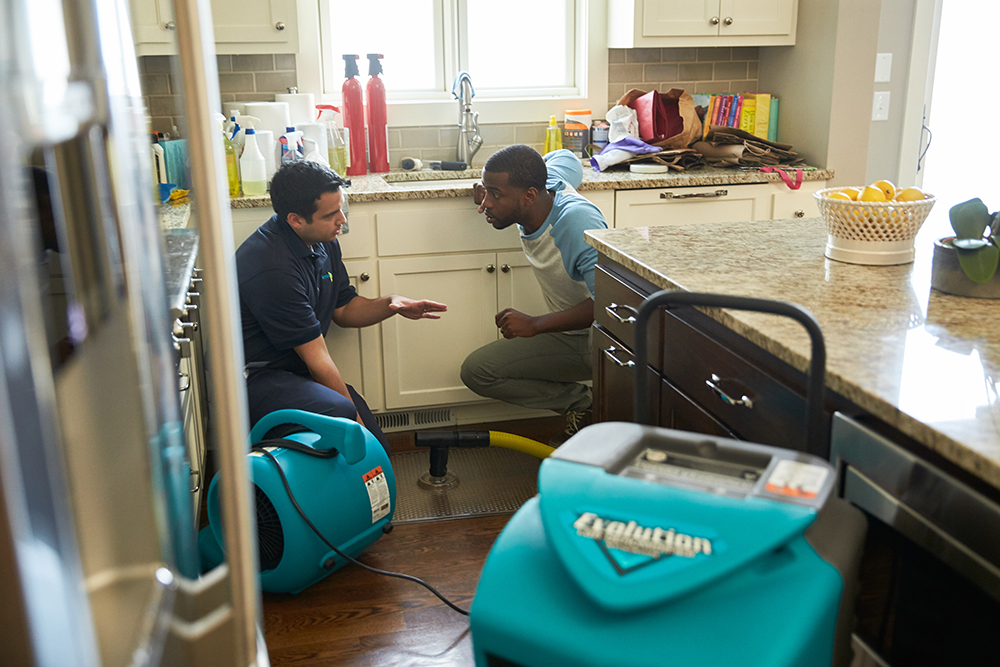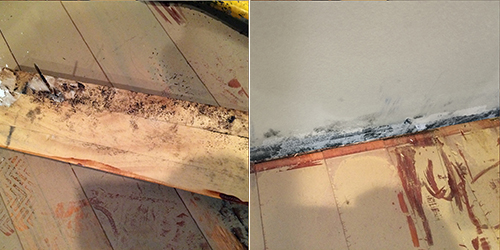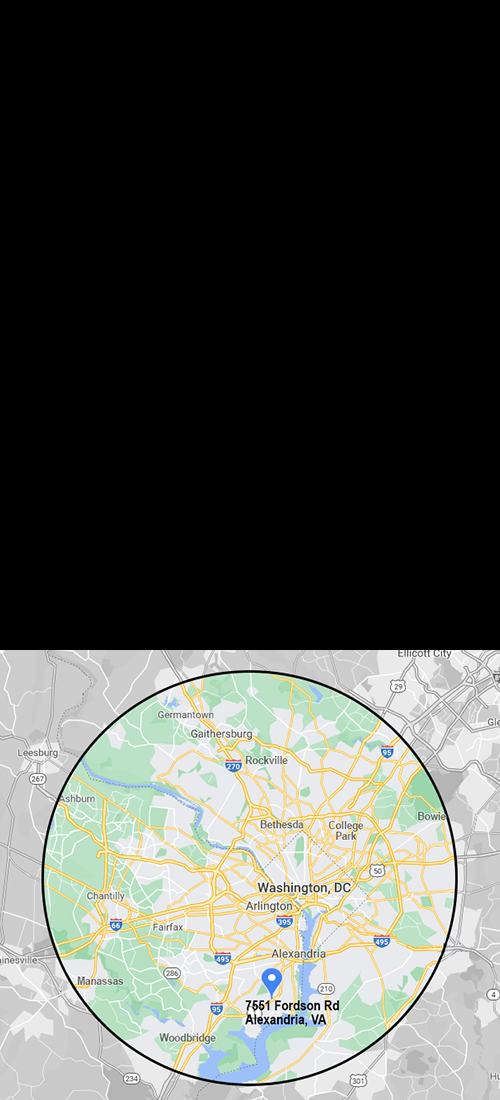Water damage is the most common form of property damage that occurs within homes and buildings. Rain, floods, leaks, plumbing and appliance issues, burst pipes, overflows, and backups can all result in serious water damage as the excess water and moisture spreads through furnishings and porous building materials. As the water continues to spread, it will cause serious damage including warping, rotting, and structural damage.
 While widespread property damage is a major issue that can occur with excess water and moisture, water damage can lead to an even more serious issue that will cause further structural damage and put your health at risk; mold. Mold growth is a risk in all cases of water damage because moisture is the main trigger of mold growth indoors. Mold spores are already a natural presence in indoor air and if the spores find an area that provides them with moisture and organic materials for a food source, they can form mold colonies rather quickly. In fact, areas affected by water damage are at risk for mold growth within 24-48 hours of the damage occurring.
While widespread property damage is a major issue that can occur with excess water and moisture, water damage can lead to an even more serious issue that will cause further structural damage and put your health at risk; mold. Mold growth is a risk in all cases of water damage because moisture is the main trigger of mold growth indoors. Mold spores are already a natural presence in indoor air and if the spores find an area that provides them with moisture and organic materials for a food source, they can form mold colonies rather quickly. In fact, areas affected by water damage are at risk for mold growth within 24-48 hours of the damage occurring.
Mold can cause serious damage to your property in addition to the water that is already present. Because mold growth eats away at affected materials that contain cellulose, such as wood and drywall, it can cause discoloration and major structural damage if given enough time. Mold also poses a major threat to your health as those who are exposed to mold spores can experience allergic reactions including headaches, coughing, nasal congestion, skin irritation, and itchy eyes and throat. Those who are exposed to mold for too long can develop more serious symptoms like respiratory infections or asthma.
How to Prevent Mold Growth after Water Damage
If any type of water damage occurs on your property, it is important to call a water damage restoration professional right away to deal with the damage. Addressing the water damage immediately is the most effective way to prevent mold growth. There are also additional steps you can take after sustaining water damage to reduce the risk of mold.
If your home or building is affected by water damage, the following tips will help you reduce the risk of mold:
- ♦ Stop the source of the water damage: The first thing that you need to do is stop the source of the excess water or moisture. If the water is coming from a leaking appliance or plumbing fixture, turn off the appliance or fixture or stop the water flow to it. It is important to know where the water shut off valve is on your property so you can turn the water off for major leaks caused by burst pipes and other internal issues. If your property has flooded, you need to find where the water came in and fix the hole or crack that it came through. It can be difficult to find the source of a leak or flood, but water damage restoration professionals will be able to find and fix the source.
- ♦ Remove excess water: As mentioned above, the presence of water can result in mold growth within as little as 24 hours which is why you need to clean up and remove water as soon as possible. Simply blot dry or wipe away water from damaged surfaces or materials using a towel or a mop. If there is standing water on your property, you should only use a shop vac that is designed for water removal to remove it. Regular vacuum cleaners are ineffective for removing water and using one will put you at risk for electrocution. If your property is flooded with several feet of water, you can only remove 2-3 feet per day or sudden changes in water pressure will cause cracking in the surrounding materials that can lead to structural damage. In most cases, it is best to have a professional remove water and dry the area with their water extraction and dehumidification equipment.
- ♦ Remove small amounts of mold: If you find a minor amount of mold growth on the affected surfaces, you can remove the mold using distilled white vinegar. Put the vinegar into a spray bottle straight, do not water it down, and spray it on the mold. Let the vinegar sit on the surface for about an hour and then wipe it away. Vinegar is a much more effective solution for removing small amounts of mold than bleach because it will penetrate the materials and kill mold that has developed below the surface. You should only use this method to kill minor mold growth that covers a small area. Mold that has spread wide and deep must be removed by a mold remediation professional.
Professional Mold Removal
 Mold removal is difficult and dangerous as attempting to remove mold without the proper equipment and techniques can cause the mold to spread and put your health at serious risk. Mold remediation professionals, like those at ServiceMaster NCR, use proven, innovative methods and equipment to find all mold on your property and remove it effectively. Our professionals can thoroughly inspect all areas affected by water damage to ensure that there is no mold growth and remove the mold that we find.
Mold removal is difficult and dangerous as attempting to remove mold without the proper equipment and techniques can cause the mold to spread and put your health at serious risk. Mold remediation professionals, like those at ServiceMaster NCR, use proven, innovative methods and equipment to find all mold on your property and remove it effectively. Our professionals can thoroughly inspect all areas affected by water damage to ensure that there is no mold growth and remove the mold that we find.
We use the following innovative mold testing and removal methods to ensure that your property is free of mold:
- ♦ InstaScope Pre and Post Testing: InstaScope testing is a highly accurate mold testing system that can instantly measure the mold levels in the air. This testing is done room by room to determine which rooms have normal mold levels, elevated mold levels that require treatment, or high mold levels that require remediation. We start by measuring the mold levels outside your home or building to get a baseline measurement and then measure the mold in each room. We will recalibrate in rooms with elevated levels to locate the mold source.
- ♦ Trifect Mold Remediation: The Trifect mold remediation method is an innovative, non-destructive method that can safely and quickly restore areas affected by mold. This mold removal method involves proprietary formulas and advanced technology to remove mold without the need for intrusive reconstruction. The Trifect method consists of the following steps:
- • Surface application: We apply a proprietary topical solution to the affected surfaces to remediate visible mold.
- • Air scrubbing: Our air scrubbers will reduce the airborne and settled mold spores. This process will result in a minimum of 8 air changes per hour with negative pressure.
- • Verification: We will test your property once again with the InstaScope testing system to ensure that the mold has been removed and that the airborne mold spores are down to a safe level.

If your home or building is affected by water damage, there is a good chance that mold growth could follow. All it takes is excess moisture for mold to grow in as little as 24 hours after the water damage has occurred. Make sure you call a water damage restoration professional right away to have the water removed before it results in mold growth. If mold growth has occurred as a result of the water damage, it is best to leave the mold removal to the professionals as well. Our professionals at ServiceMaster NCR will ensure that your property is mold free following water damage with our innovative mold testing and removal process.













